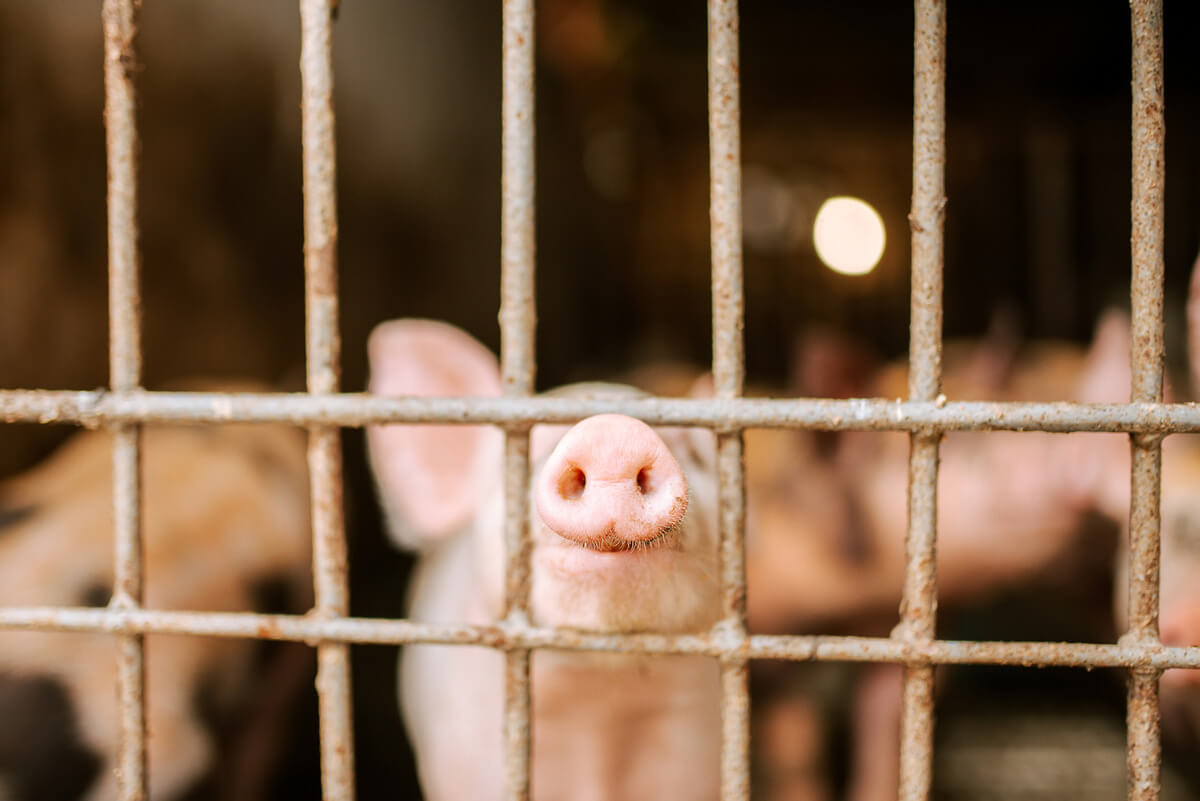Learning how to raise, butcher, and prepare homegrown pork for the best flavor is something every homesteader wants to know. Join me for this podcast with Brandon Sheard, the Farmstead Meatsmith as he shares his best tips for raising pigs.

I’ve discussed how to raise pigs here, including purchasing pigs, the space requirements, feed, etc. I’ve also interviewed Cathy Payne, discussing raising American Guinea Hogs here. I also did a follow-up podcast on whether raising American Guinea Hogs was worth it. But today’s episode with Brandon is so fascinating, and I know you’ll love it just as much as I.
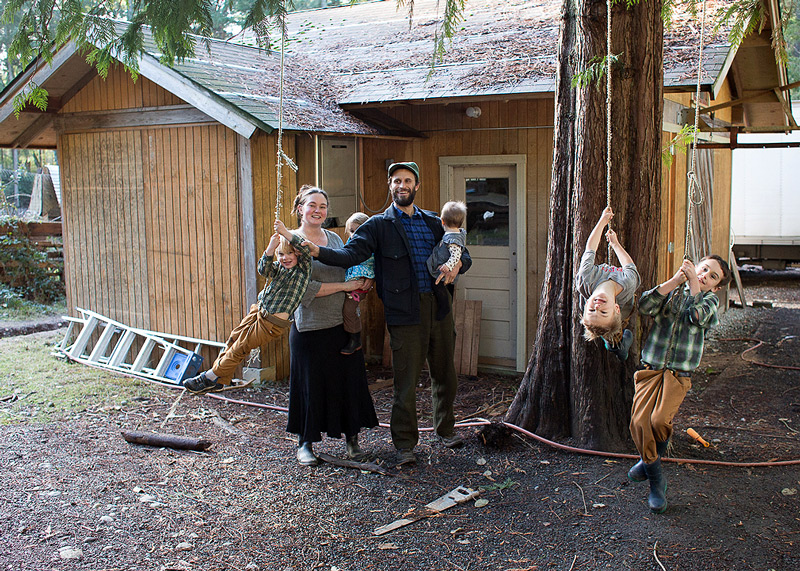
Table of Contents[Hide][Show]
Brandon Sheard, Farmstead Meatsmith
You may have heard of Brandon from the Farmstead Meatsmith. He came into traditional slaughter, butchery and curing after finishing his graduate work in Renaissance English Literature.
After marrying his wife Lauren, he quit his job at WholeFoods in the supplement department and started work on a small, multispecies and pasture-based farm in the Pacific Northwest.
After two years of working on the farm and managing the butcher shop, Brandon left and started Farmstead Meatsmith with his wife and kids.
They are self-taught in the art of traditional animal harvesting. Brandon and Lauren continue to provide the services of livestock processing, online education, and on-farm classes through Farmstead Meatsmith, with a little help from their eight children.
Farmstead Meatsmith prizes the pre-modern traditions of our fathers to enrich the family table and restore husbandry to prosperity.
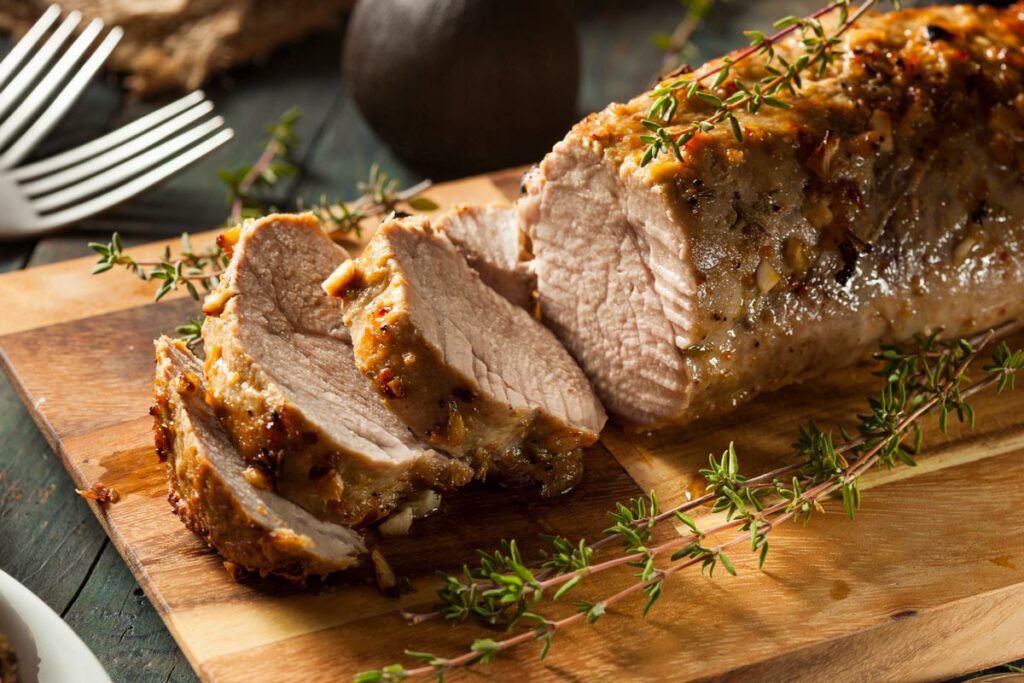
Learn to Cook First
The best way to learn how to harvest, process, cut, and cure the animals you raise, is first to learn the final cause, which is to cook them well. The final cooked product is what will guide every process that comes before it.
This is how Brandon learned to cook as he was selling meat at a farmer’s market and had to teach the people buying the product how to cook it.
For myself, this was how I was taught to cook our own grass-fed beef. Many people are used to grocery store beef and it has a very different flavor profile than grass-fed grass-finished beef. If it’s not cooked correctly, it doesn’t taste great. Here are some tips on eating nose to tail.
Learn These Three Methods
Brandon shares that the first step is to get rid of all the recipes you’ve used in the past and become skilled in braising, pan-frying and roasting.
This sounds so overly simplistic, but these three cooking methods will become your guide even to the butchery process.
The Most Important Ingredient
Brandon says the most decisive and important ingredients are the husbandry and the harvest – how the animal was raised and killed.
If those two things are done correctly, you’re starting with the most delicious product you’ll ever taste. Your job then is not to burn it to a crisp and be sure to salt it proficiently.
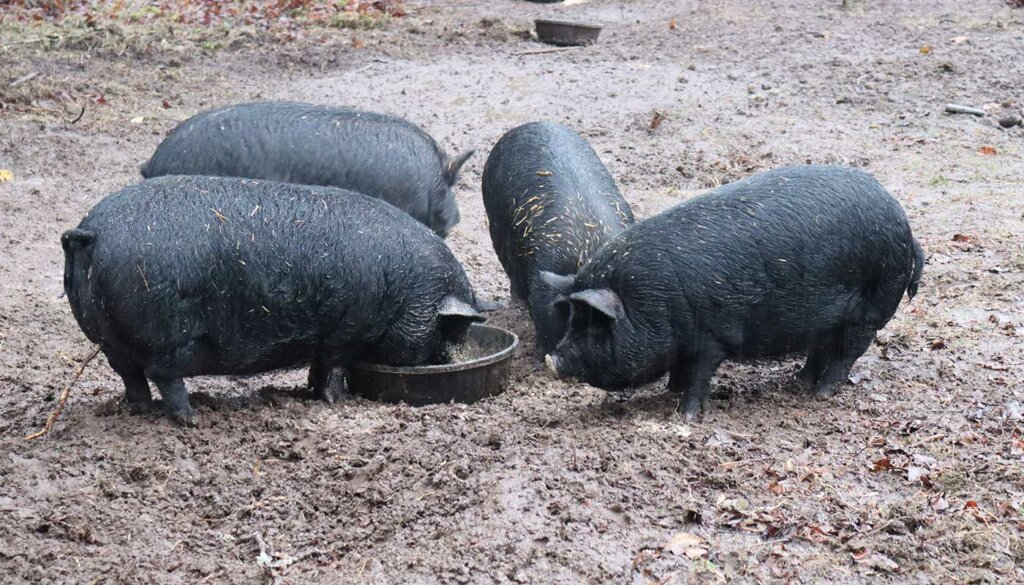
What to Feed Pigs
You may be wondering what’s the best diet to feed pigs to ensure high-quality tasting meat.
Brandon shares that pigs are so flexible, and it’s sometimes easier to talk about what not to feed them (more on that below). He’s fed his pigs anything from a diet of day-old dumpster bread to an organic, high-quality hog mash.
You can also feed them leftover whey, which Brandon calls an ancient harmony. When feeding pigs whey, you can get away with a lesser quality grain because they’re getting all the nutrients needed from whey.
Brandon also recommends, if possible, that pigs be allowed access to forest lands, especially if you have nut trees.
For our pigs, we’ve always harvested the fallen apples from the trees and mixed that into our pig’s mash. We always thought the apples gave our pork a sweeter taste.
Brandon says it’s likely due to the tannins in the skin of the apples, not necessarily the sugar content.
What Not To Feed Pigs
You don’t want to feed pigs large amounts of fish emulsions. Depending on what you’re using your pigs for will also determine what you should or shouldn’t feed your pigs.
For example, if you’re wanting to make prosciutto, it will be hanging and curing for up to two years to develop the correct flavor, so you should avoid soy if at all possible in the hog ration. Because soy is usually baked, the oil in the soil is already oxidized and can give the pig’s fat a bitter flavor.

Harvesting Pigs
The Kill
The on-farm kill is the best way to kill an animal for butchering. The key to getting the most yield out of your pig, meaning not wasting any part of the animal, is to scald and scrape the pig. (Here are more tips for butchering large animals at home.)
Since Brandon left Washington State, he’s pretty sure there aren’t butchers who will come and scald and scrape your animals anymore. So knowing how to do this yourself is the best way to maximize your yield.
Also, the best way to kill a pig is with a bullet to the brain about 2-3 inches above the eyes.
Then you have to stick the pig just behind the jawline to allow all the blood to drain from the pig. You can harvest the blood to make blood sausage if you’d like.
Scalding
To scald the pig, the way Brandon did this for years was to find a tree branch about 16 feet off the ground where he can hoist the pig up.
He then used a 55-gallon drum on a very powerful jet propane burner. The jet propane burner allows the water to heat up to a scalding temperature (147° F) within about 20 minutes. Anything less powerful than that, and you’ll be waiting for that water to heat up for an hour and a half.
You want to avoid over-scalding the pig, this is why the scalding temperature is so important.
Then lower the pig into the water (only half the pig at a time) for about 90 seconds. Lift the pig back out and wipe some of the hair to see if it brushes away easily.
If the hair doesn’t scrape away easily, you can dip it back in for about 15 seconds, 30 seconds, or 50 seconds until that hair comes off. But don’t over-scald because this will adhere the hair to the pig and make it more difficult to scrape off.
Scraping
Once you’ve scaled the pig, you begin scraping off all the hair, the outer layer of skin, etc.
Gutting
The next step is to gut the pig and harvest the heart, liver, kidneys, etc. Brandon recommends not using a sharp knife when doing this but rather using your fingers to avoid ripping through.
Hanging
Once the pig is scalded, scraped and gutted, you then hang the pig overnight in a cold area (butchering outdoors in the winter generally is sufficient, depending on where you live).
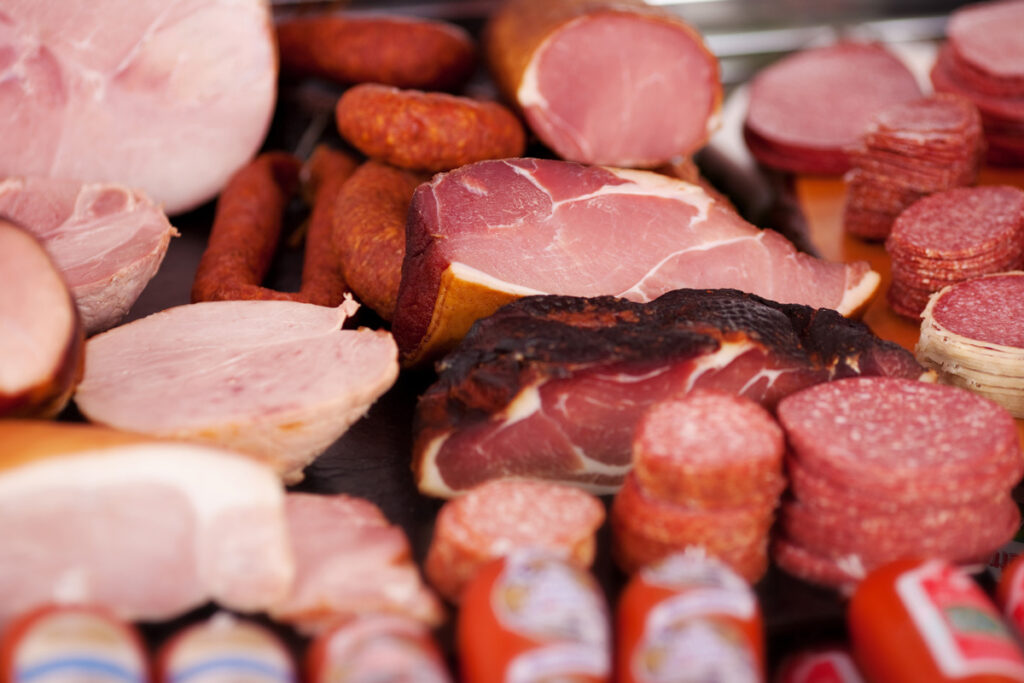
Curing Pork
Because not all areas have cold nights (or cold storage) to hang pigs after butchering, many cultures use salt to immediately cure the pork.
This will yield a different kind of meat, it’s not necessarily the process you’ll want to use for cuts like pork chops.
If you listen to the podcast, Brandon talks further about curing meat with salt. The steps are basic, and he talks about how it’s impossible not to know when the meat has spoiled.
He also shares tips like keeping flies away from meat, using the correct amount of salt, curing for the right amount of time, etc.
He also shares that curing meat during the right time of year (generally winter) is most important because, most often, when meat is spoiled, it’s due to flies.
I also have another podcast episode on dry curing meat here, this is the process of fermentation used for curing salami.
Modern Homesteading Conference
This is the first announcement for my upcoming Modern Homesteading Conference in 2023 (June 30-July1) in Coeur d’Alene, Idaho.
I’m excited to say that Brandon will be there doing a two-day demonstration from slaughter, butchering, to charcuterie.
We have limited tickets available, so if you want to grab your tickets at the lowest price they’ll ever be offered, get them here.
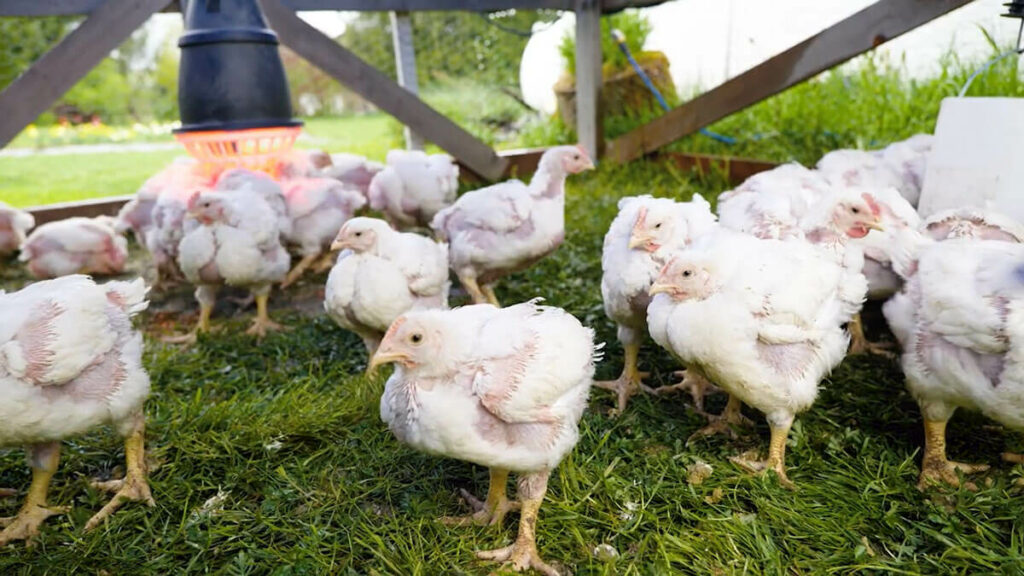
If you want to learn the exact methods Brandon follows for curing meat, I highly recommend you become a Meatsmith member. Brandon also has some teaching videos on Abundance Plus (use code “MKNFREEMONTH” for a free month of streaming). If you haven’t subscribed to Abundance Plus yet, I highly recommend it as it’s a wealth of resources.
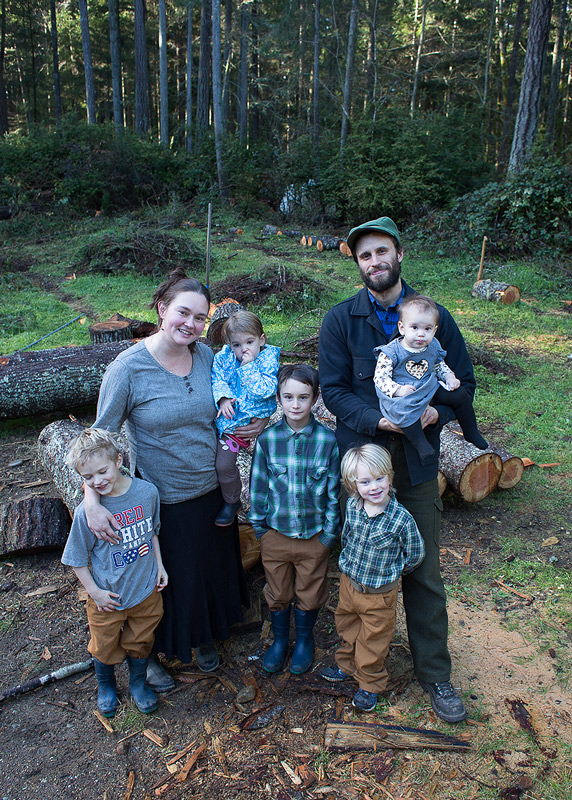
Where to Find Brandon
Be sure to follow along on Brandon’s journey and learn more of the skills he teaches:
- The Farmstead Meatsmith website
- Watch Brandon on YouTube
- Listen to his Podcast A Meatsmith Harvest
- Take a class from Brandon
- Get on the list for pork shares
- Find Brandon on Facebook and Instagram
[fusebox_transcript]
